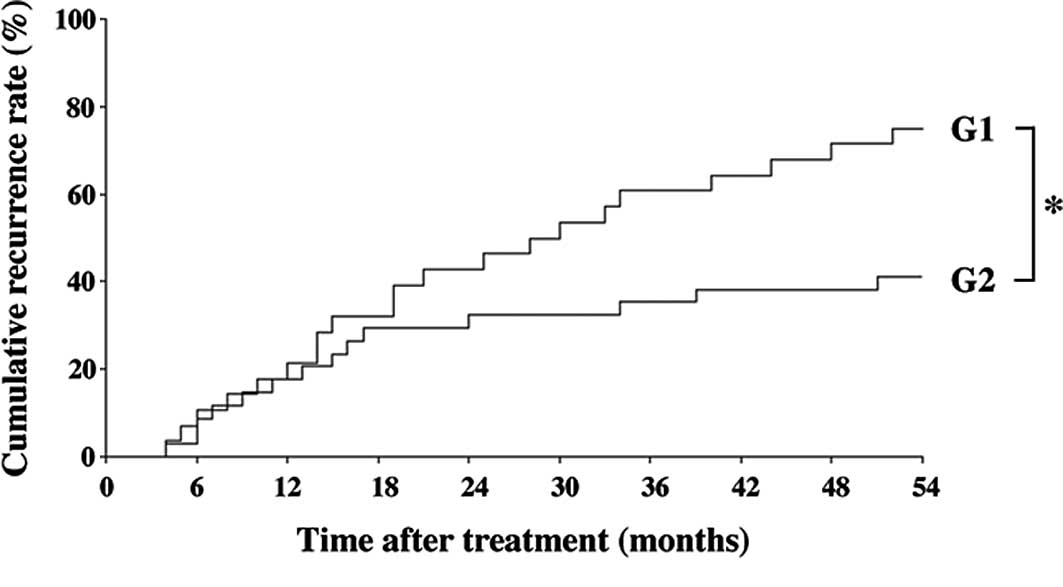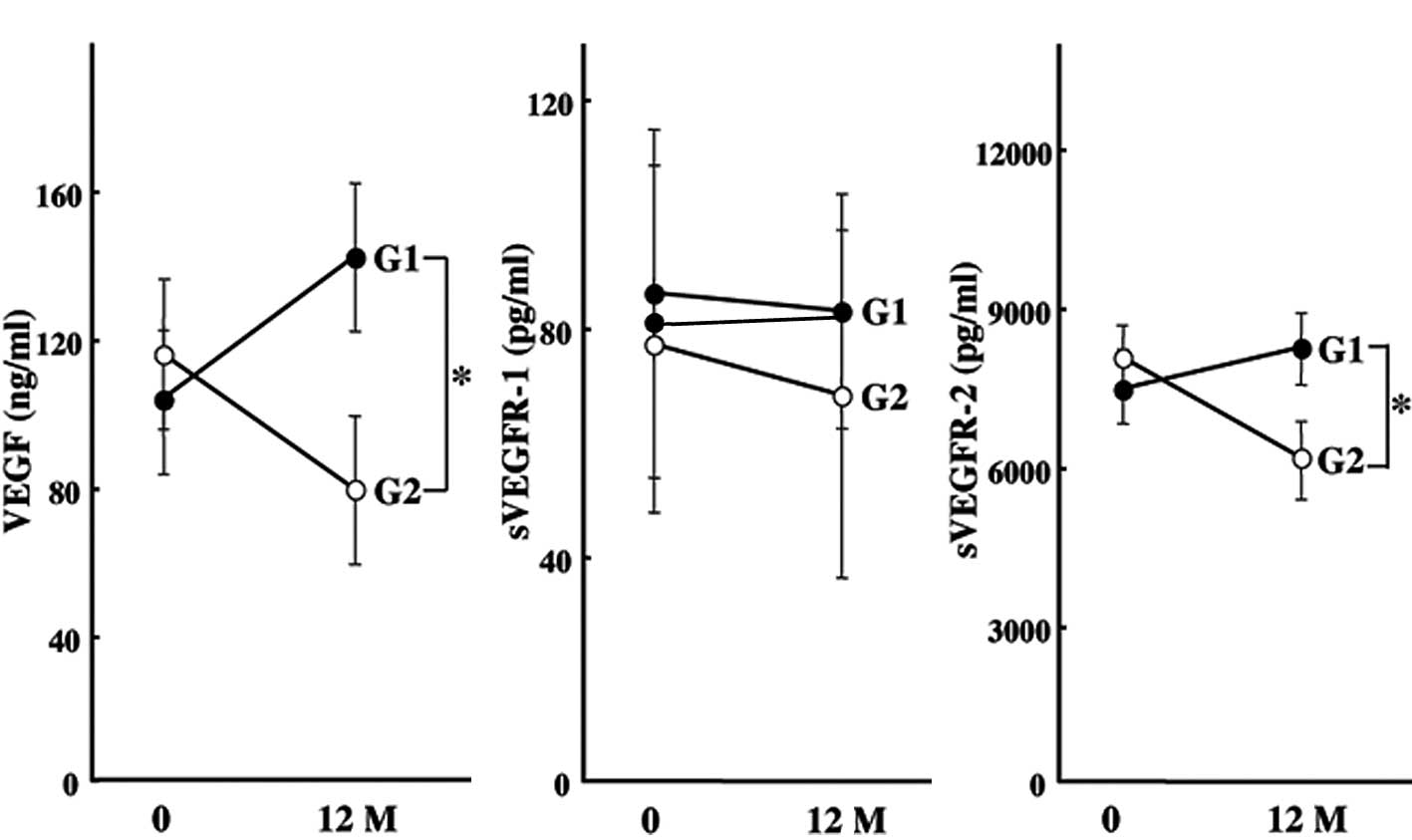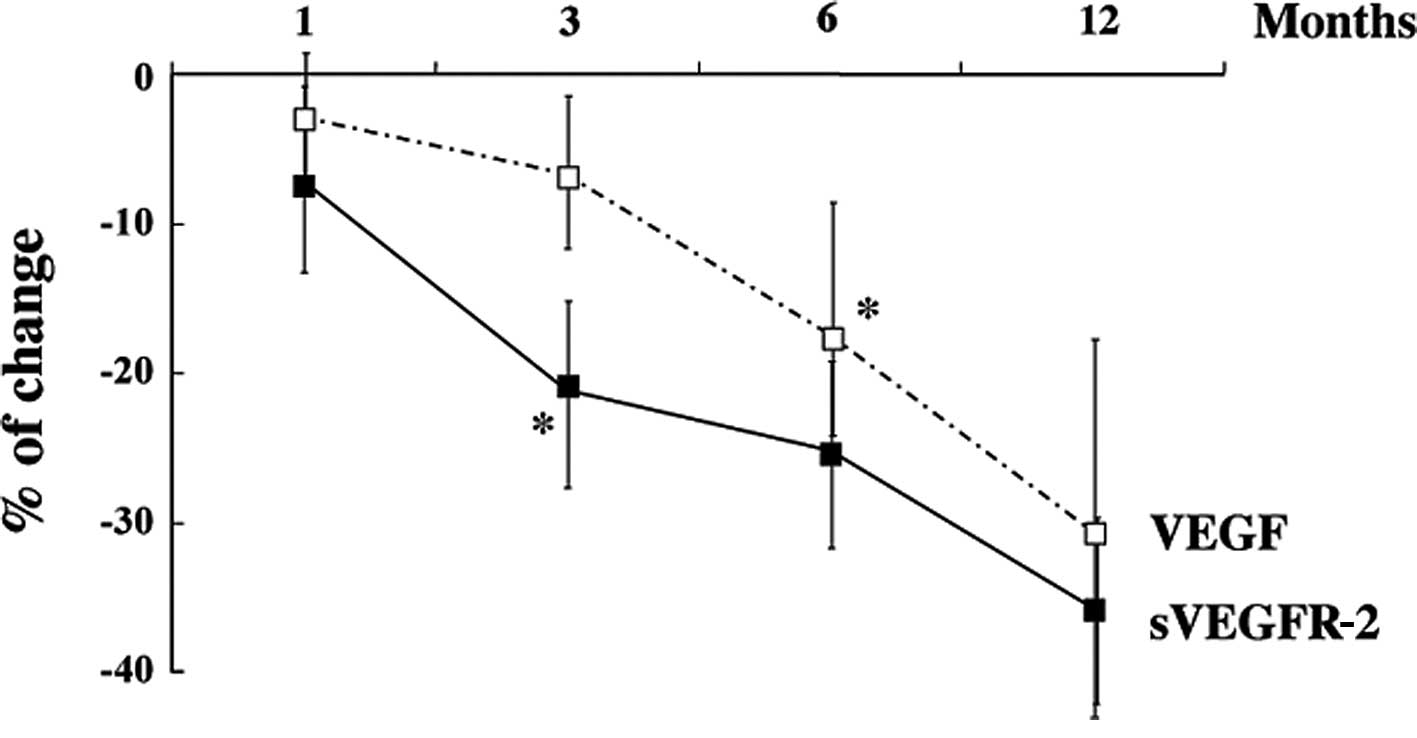Spandidos Publications style
Yoshiji H, Noguchi R, Ikenaka Y, Kaji K, Shirai Y, Aihara Y, Yamao J, Toyohara M, Mitoro A, Sawai M, Sawai M, et al: Soluble VEGF receptor-2 may be a predictive marker of anti-angiogenic therapy with clinically available safe agents. Oncol Lett 2: 69-73, 2011.
APA
Yoshiji, H., Noguchi, R., Ikenaka, Y., Kaji, K., Shirai, Y., Aihara, Y. ... Fukui, H. (2011). Soluble VEGF receptor-2 may be a predictive marker of anti-angiogenic therapy with clinically available safe agents. Oncology Letters, 2, 69-73. https://doi.org/10.3892/ol.2010.196
MLA
Yoshiji, H., Noguchi, R., Ikenaka, Y., Kaji, K., Shirai, Y., Aihara, Y., Yamao, J., Toyohara, M., Mitoro, A., Sawai, M., Yoshida, M., Morioka, C., Fujimoto, M., Uemura, M., Kawaratani, H., Tsujimoto, T., Fukui, H."Soluble VEGF receptor-2 may be a predictive marker of anti-angiogenic therapy with clinically available safe agents". Oncology Letters 2.1 (2011): 69-73.
Chicago
Yoshiji, H., Noguchi, R., Ikenaka, Y., Kaji, K., Shirai, Y., Aihara, Y., Yamao, J., Toyohara, M., Mitoro, A., Sawai, M., Yoshida, M., Morioka, C., Fujimoto, M., Uemura, M., Kawaratani, H., Tsujimoto, T., Fukui, H."Soluble VEGF receptor-2 may be a predictive marker of anti-angiogenic therapy with clinically available safe agents". Oncology Letters 2, no. 1 (2011): 69-73. https://doi.org/10.3892/ol.2010.196

















